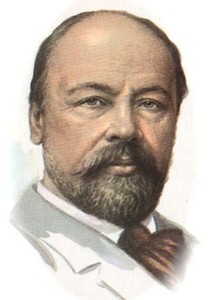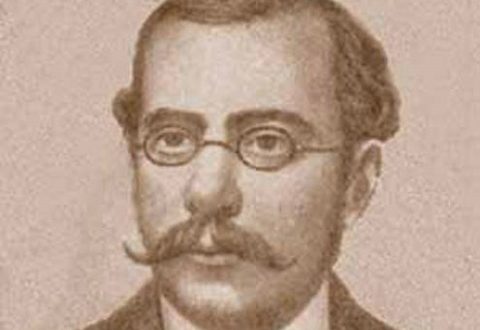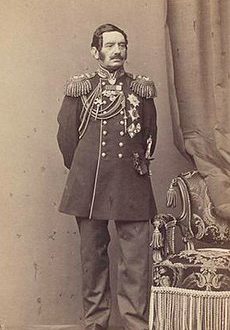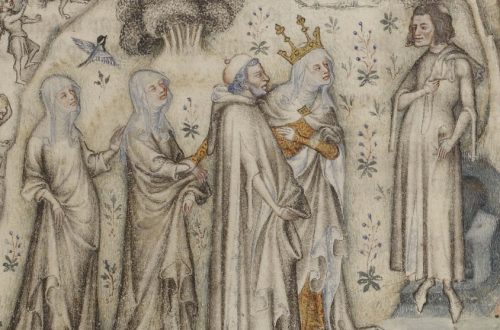
Anatoly Lyadov |
Anatoly Lyadov
Lyadov. Lullaby (dir. Leopold Stokowski)
… Lyadov modestly assigned himself the field of miniature – piano and orchestral – and worked on it with great love and thoroughness of an artisan and with taste, a first-class jeweler and master of style. The beauty really lived in him in the national-Russian spiritual form. B. Asafiev

A. Lyadov belongs to the younger generation of a remarkable galaxy of Russian composers of the second half of the XNUMXth century. He showed himself as a talented composer, conductor, teacher, musical and public figure. At the heart of Lyadov’s work are images of Russian epic and song folklore, fairy-tale fantasy, he is characterized by lyrics imbued with contemplation, a subtle sense of nature; in his works there are elements of genre characteristic and comedy. Lyadov’s music is characterized by a light, balanced mood, restraint in expressing feelings, only occasionally interrupted by a passionate, direct experience. Lyadov paid great attention to the improvement of the artistic form: ease, simplicity and elegance, harmonious proportion – these are his highest criteria for artistry. The work of M. Glinka and A. Pushkin served as an ideal for him. He thought for a long time in all the details of the works he created and then wrote down the composition cleanly, almost without blots.
Lyadov’s favorite musical form is a small instrumental or vocal piece. The composer jokingly said that he could not stand more than five minutes of music. All his works are miniatures, concise and honed in form. Lyadov’s work is small in volume, cantata, 12 compositions for a symphony orchestra, 18 children’s songs on folk words for voice and piano, 4 romances, about 200 arrangements of folk songs, several choirs, 6 chamber instrumental compositions, over 50 pieces for piano.
Lyadov was born into a musical family. His father was a conductor at the Mariinsky Theatre. The boy had the opportunity to listen to symphonic music in concerts, often visit the opera house for all rehearsals and performances. “He loved Glinka and knew it by heart. “Rogneda” and “Judith” Serov admired. On the stage, he participated in the processions and the crowd, and when he came home, he portrayed Ruslan or Farlaf in front of the mirror. He heard enough of the singers, choir and orchestra,” recalled N. Rimsky-Korsakov. Musical talent manifested itself early, and in 1867 the eleven-year-old Lyadov entered the St. Petersburg Conservatory. He studied practical writing with Rimsky-Korsakov. However, for absenteeism and indiscipline in 1876, he was expelled. In 1878, Lyadov entered the conservatory for the second time and in the same year brilliantly passed the final exam. As a diploma work, he was presented with the music for the final scene of “The Messinian Bride” by F. Schiller.
In the mid 70s. Lyadov meets members of the Balakirev circle. Here is what Mussorgsky wrote about the first meeting with him: “… A new, undoubted, original and Russian young talent…” Communication with major musicians had a great influence on the creative development of Lyadov. The range of his interests is expanding: philosophy and sociology, aesthetics and natural science, classical and modern literature. The essential need of his nature was reflection. “Peck out of the book what You need toand develop it at largeand then you will know what it means think“, he wrote later to one of his friends.
From the autumn of 1878, Lyadov became a teacher at the St. Petersburg Conservatory, where he taught theoretical disciplines for performers, and from the mid-80s. He also teaches at the Singing Chapel. At the turn of the 70-80s. Lyadov began his career as a conductor in the St. Petersburg circle of music lovers, and later performed as a conductor in public symphony concerts founded by A. Rubinstein, as well as in Russian symphony concerts founded by M. Belyaev. His qualities as a conductor were highly valued by Rimsky-Korsakov, Rubinstein, G. Laroche.
Lyadov’s musical connections are expanding. He meets P. Tchaikovsky, A. Glazunov, Laroche, becomes a member of Belyaevsky Fridays. At the same time, he became famous as a composer. Since 1874, Lyadov’s first works have been published: 4 romances, op. 1 and “Spikers” op. 2 (1876). Romances turned out to be Lyadov’s only experience in this genre; they were created under the influence of the “Kuchkists”. “Spikers” is Lyadov’s first piano composition, which is a series of small, diverse pieces, combined into a complete cycle. Already here Lyadov’s manner of presentation is determined – intimacy, lightness, elegance. Until the early 1900s. Lyadov wrote and published 50 opuses. Most of them are small piano pieces: intermezzos, arabesques, preludes, impromptu, etudes, mazurkas, waltzes, etc. The Musical Snuffbox has won wide popularity, in which images of a puppet-toy world are reproduced with particular subtlety and sophistication. Among the preludes, the Prelude in B minor op. stands out especially. 11, the melody of which is very close to the folk tune “And what in the world is cruel” from M. Balakirev’s collection “40 Russian Folk Songs”.
The largest works for piano include 2 cycles of variations (on the theme of Glinka’s romance “Venetian Night” and on a Polish theme). One of the most famous plays was the ballad “About antiquity”. This work is close to the epic pages of Glinka’s opera “Ruslan and Lyudmila” and “Bogatyrskaya” symphony by A. Borodin. When in 1906 Lyadov made an orchestral version of the ballad “About the old days”, V. Stasov, having heard it, exclaimed: “The real accordion You sculpted here.”
At the end of the 80s. Lyadov turned to vocal music and created 3 collections of children’s songs based on the texts of folk jokes, fairy tales, choruses. C. Cui called these songs “tiny pearls in the finest, finished finish.”
Since the end of the 90s. Lyadov is passionately engaged in the processing of folk songs collected by the expeditions of the Geographical Society. 4 collections for voice and piano stand out especially. Following the traditions of Balakirev and Rimsky-Korsakov, Lyadov widely uses the techniques of subvocal polyphony. And in this form of musical creativity, a typical Lyadov trait is manifested – intimacy (he uses the minimum number of voices that form a light transparent fabric).
By the beginning of the XX century. Lyadov becomes one of the leading and authoritative Russian musicians. At the conservatory, special theoretical and composition classes pass to him, among his students are S. Prokofiev, N. Myaskovsky, B. Asafiev, and others. Lyadov’s behavior in 1905, during the period of student unrest, can be called bold and noble. Far from politics, he unconditionally joined the leading group of teachers who protested against the reactionary actions of the RMS. After his dismissal from the Rimsky-Korsakov Conservatory, Lyadov, together with Glazunov, announced his resignation from its professors.
In the 1900s Lyadov turns mainly to symphonic music. He creates a number of works that continue the traditions of Russian classics of the XNUMXth century. These are orchestral miniatures, the plots and images of which are suggested by folk sources (“Baba Yaga”, “Kikimora”) and contemplation of the beauty of nature (“Magic Lake”). Lyadov called them “fabulous pictures.” In them, the composer makes extensive use of the coloristic and pictorial possibilities of the orchestra, following the path of Glinka and the composers of The Mighty Handful. A special place is occupied by “Eight Russian Folk Songs for Orchestra”, in which Lyadov skillfully used authentic folk tunes – epic, lyrical, dance, ritual, round dance, expressing different aspects of the spiritual world of a Russian person.
During these years, Lyadov showed a lively interest in new literary and artistic trends, and this was reflected in his work. He writes music for the play by M. Maeterlinck “Sister Beatrice”, the symphonic picture “From the Apocalypse” and “Sorrowful Song for Orchestra”. Among the latest ideas of the composer are the ballet “Leila and Alalei” and the symphonic picture “Kupala Night” based on the works of A. Remizov.
The last years of the composer’s life were overshadowed by the bitterness of loss. Lyadov was very acutely and deeply upset by the loss of friends and associates: one by one, Stasov, Belyaev, Rimsky-Korsakov passed away. In 1911, Lyadov suffered a serious illness, from which he could not fully recover.
A striking evidence of the recognition of Lyadov’s merits was the celebration in 1913 of the 35th anniversary of his creative activity. Many of his works are still widely popular and loved by listeners.
A. Kuznetsova





